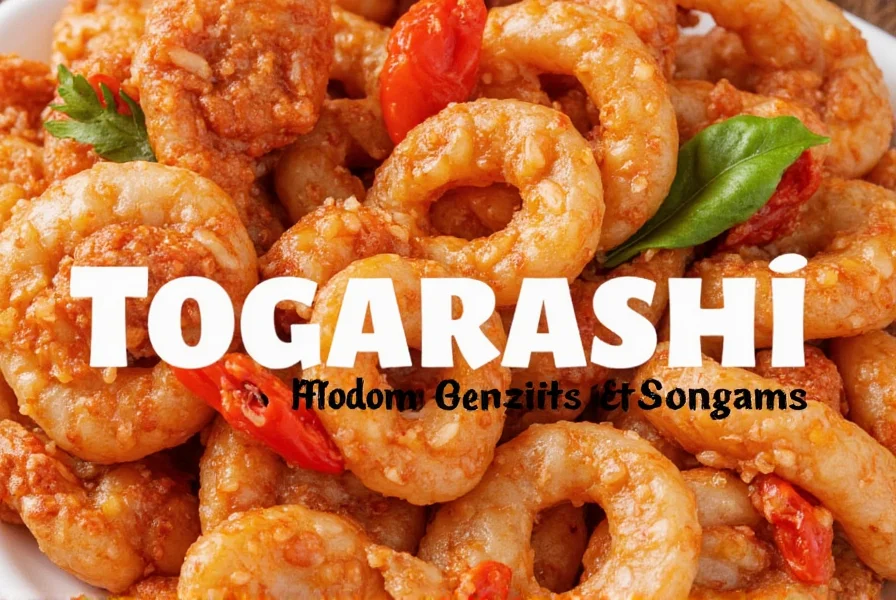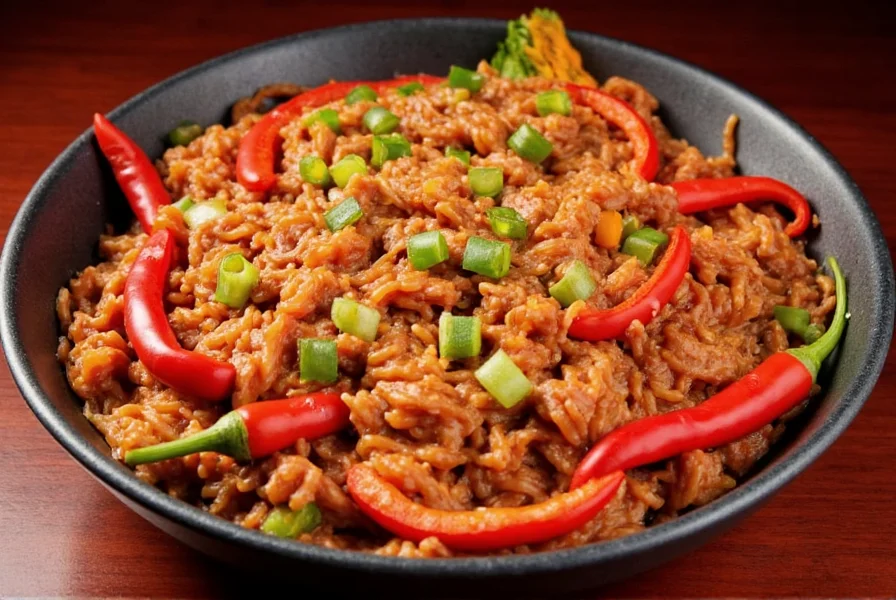Shichimi togarashi (七味唐辛子), commonly referred to as "togarashi" in Western contexts, is a traditional Japanese seven-spice blend featuring chili peppers, sesame seeds, citrus peel, nori, and other aromatic ingredients. This versatile seasoning enhances dishes with balanced heat and complex flavor, making it essential for Japanese cuisine and modern cooking. In this guide, you'll learn everything about shichimi togarashi—from its origins to practical uses, buying tips, and health benefits.
Table of Contents
- What is Shichimi Togarashi?
- Heat Levels and Culinary Uses
- How to Use Shichimi Togarashi
- Buying Guide
- Tips for Cooks
- Frequently Asked Questions
- Conclusion
What is Shichimi Togarashi?
"Togarashi" (唐辛子) literally means "chili pepper" in Japanese, but the term is often misused. Shichimi togarashi (七味唐辛子, "seven-flavor chili pepper") is the actual blend most people encounter. It combines dried chili peppers with six other ingredients: sesame seeds (white and black), orange or yuzu peel, nori (seaweed), sanshō pepper, hemp seed, and ginger. Originating in 17th-century Tokyo, this blend was created to add both heat and umami to dishes like ramen, udon, and grilled fish. Unlike pure chili peppers, shichimi togarashi offers nuanced flavor with moderate heat (typically 5,000-10,000 Scoville units), making it accessible for everyday cooking.
| Ingredient | Role in the Blend |
|---|---|
| Chili Peppers | Primary heat source (usually Japanese bird's eye chili) |
| Sesame Seeds | Added nutty depth and texture |
| Citrus Peel | Provides bright, aromatic notes |
| Nori | Contributes savory umami |
| Sanshō Pepper | Adds tingling, numbing sensation |
Japan Food Export Council confirms shichimi togarashi is a staple in Japanese households and restaurants worldwide. Its balanced profile makes it ideal for beginners exploring Asian spices.
Heat Levels and Culinary Uses
Shichimi togarashi's heat varies by brand, but it's generally milder than pure chili flakes due to the blend of ingredients. Here's how to use it effectively:
| Heat Level | Scoville Range | Best Uses |
|---|---|---|
| Mild | 1,000–5,000 SHU | Seasoning rice, soups, and delicate seafood |
| Medium | 5,000–10,000 SHU | Ramen, udon, grilled meats, and stir-fries |
| Hot | 10,000+ SHU | Spicy sauces, marinades, and bold dishes |
Unlike pure chili powders, shichimi togarashi's complexity shines when used as a finishing spice. Sprinkle it on finished dishes to preserve its aromatic oils. For example, a pinch on avocado toast or roasted vegetables elevates simple meals with minimal effort.
How to Use Shichimi Togarashi
- Ramen and Noodles: Add 1/4 tsp to broth for instant depth, or sprinkle on top of finished bowls.
- Protein Marinades: Mix with soy sauce, garlic, and honey for chicken or tofu.
- Vegetable Enhancement: Toss roasted carrots or sweet potatoes with olive oil and shichimi before serving.
- Avocado Toast: Top with avocado, sea salt, and a light dusting of shichimi for a savory breakfast.
- Popcorn Snack: Toss air-popped popcorn with melted butter and shichimi for a spicy treat.
- Yogurt Dip: Stir into Greek yogurt with lemon juice for a quick spicy dip.

Buying Guide
When purchasing shichimi togarashi, prioritize quality and authenticity:
- Reputable Brands: Look for Nihon Shokuhin, Kikkoman, or San-J for authentic Japanese blends.
- Check Ingredients: Avoid products with artificial additives. Authentic blends should list 5-7 natural ingredients.
- Storage: Keep in an airtight container away from light and moisture. Refrigeration extends freshness for up to 6 months.
- Homemade Option: Blend 1 tbsp chili flakes, 1 tsp sesame seeds, 1/2 tsp dried orange peel, 1/4 tsp nori, and a pinch of sanshō pepper for a quick substitute.

Tips for Cooks
- Start Small: Begin with 1/8 tsp per serving—shichimi's flavor intensifies quickly.
- Pair with Umami: Combine with soy sauce, miso, or fish sauce for balanced depth.
- Use Fresh: For maximum aroma, add shichimi to dishes just before serving.
- Safety First: Wear gloves when handling fresh chili peppers during homemade blends to prevent skin irritation.
- Experiment: Try it on eggs, popcorn, or even chocolate desserts for surprising flavor contrasts.

Frequently Asked Questions
What's the difference between togarashi and shichimi togarashi?
"Togarashi" (唐辛子) simply means "chili pepper" in Japanese. "Shichimi togarashi" (七味唐辛子) is a specific seven-ingredient blend. In Western contexts, "togarashi" usually refers to shichimi togarashi, but technically they're not the same. Always check labels for "shichimi" to ensure you're getting the blend.
Is shichimi togarashi spicy?
Yes, but moderately. Most commercial blends range from 5,000-10,000 Scoville units—less spicy than a jalapeño (2,500-8,000 SHU) but hotter than sweet paprika. The blend's citrus and sesame notes balance the heat, making it approachable for most palates.
Can I use shichimi togarashi as a substitute for chili flakes?
Yes, but with adjustments. Shichimi has more complex flavors (citrus, sesame, nori) than plain chili flakes. Use half the amount for similar heat, and adjust to taste. For recipes needing pure heat (like spicy sauces), use chili flakes instead.
Does shichimi togarashi have health benefits?
Yes. Capsaicin in chili peppers may boost metabolism and reduce inflammation. Sesame seeds provide healthy fats and calcium, while nori offers iodine and B vitamins. Citrus peel contributes vitamin C. However, it's a seasoning—not a supplement—and should be consumed in moderation as part of a balanced diet.
Conclusion
Shichimi togarashi is far more than just a spicy condiment—it's a versatile flavor enhancer rooted in Japanese culinary tradition. Its balanced heat and aromatic complexity make it ideal for elevating everyday dishes, from simple soups to gourmet meals. By understanding its origins, proper usage, and quality indicators, you can confidently incorporate this blend into your cooking. Start small, experiment fearlessly, and discover why shichimi togarashi has been a staple in Japanese kitchens for centuries.












 浙公网安备
33010002000092号
浙公网安备
33010002000092号 浙B2-20120091-4
浙B2-20120091-4